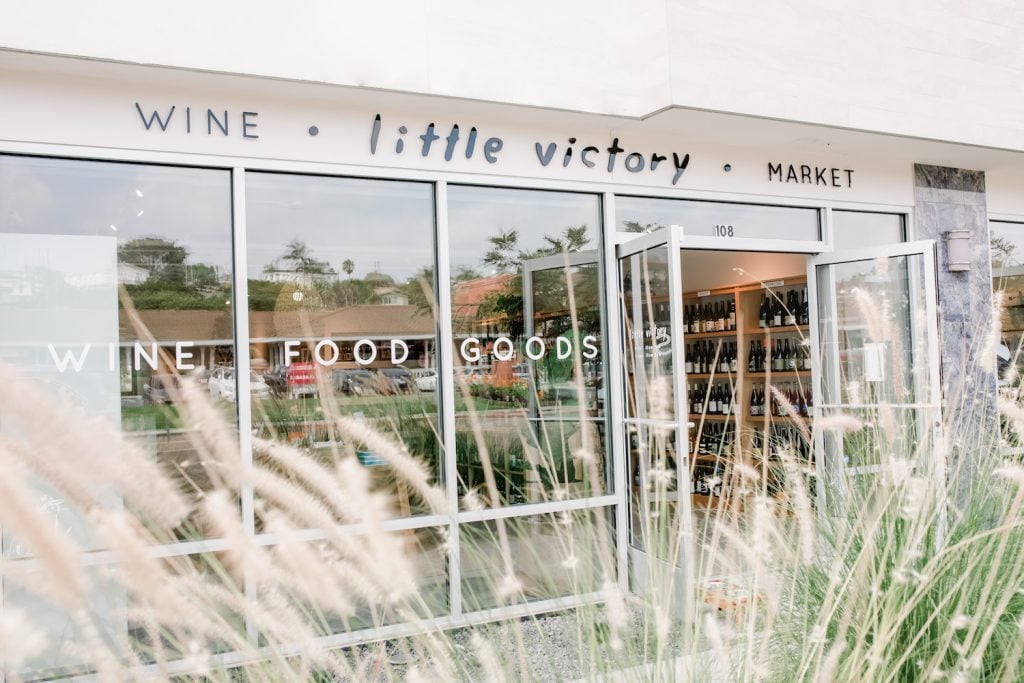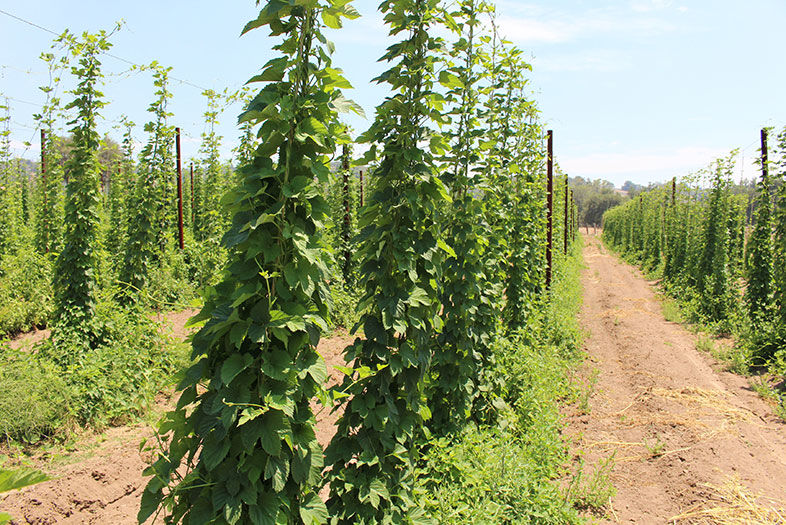For many years, the Pacific Northwest has dominated the North American hops industry. Not only are Washington and Oregon historically the largest growers of hops, their varieties—with their heady tropical, citrus, and piney aromas and potent alpha acids for bittering—are the most prized among brewers who liked to make hop-forward beers.
Today, the Pacific Northwest still leads in the production of North American hops (according to the U.S. Department of Agriculture, Washington produced 75% of American hops in 2017, with Idaho [13%] finally overtaking Oregon [11%] for second place). The USDA also calculates that those three states harvested just over 53,000 acres of hops in 2017. By way of comparison, according to the Hopsteiner Report, in 2016 California had 130 acres of hops planted. That’s an astoundingly low number of acres, considering the total size of our state. But here’s an even more surprising statistic: Roughly 10% of California’s current hop production comes from San Diego.
California did not always lag so far behind in the hops game. In fact, before Prohibition, California was one of America’s leading hops producers and also an innovator in hop farming and harvesting. By World War II, various blights and labor problems caused what was left of the California hop industry to dry up. It’s only recently that farmers around the state have made a larger-scale concerted effort to start farming hops once again.
In San Diego, Star B Ranch in Ramona is leading the SoCal hop-growing revolution. As the county’s largest hop producer, Star B has cultivated long-term relationships with many local brewers—folks who covet the rare opportunity to create beers with “wet” hops that are not only local, but also the freshest possible (they are typically in the kettle at the brew house within hours of being picked).
Eric March manages Star B Ranch (his wife Annie’s grandfather owns the 1,200-acre property), where growing hops and raising bison are the main concerns. The family has managed the land since they purchased the ranch in 1976. At that time, the property was a horse ranch, but by 1979, Eric’s wife moved to Star B with her parents and brother and began to raise bison there. At one point, the ranch was the largest distributor of bison meat in the Southwest.
Today, Star B has 49 head of bison and 3 acres of hops under bine. (A “bine” is technically different from a “vine” in that a vine expands outward or upward by the growth of its trailing runners while its main stem grows straight upward, and a bine expands upward with its whole body by twining and growing in a helix.)
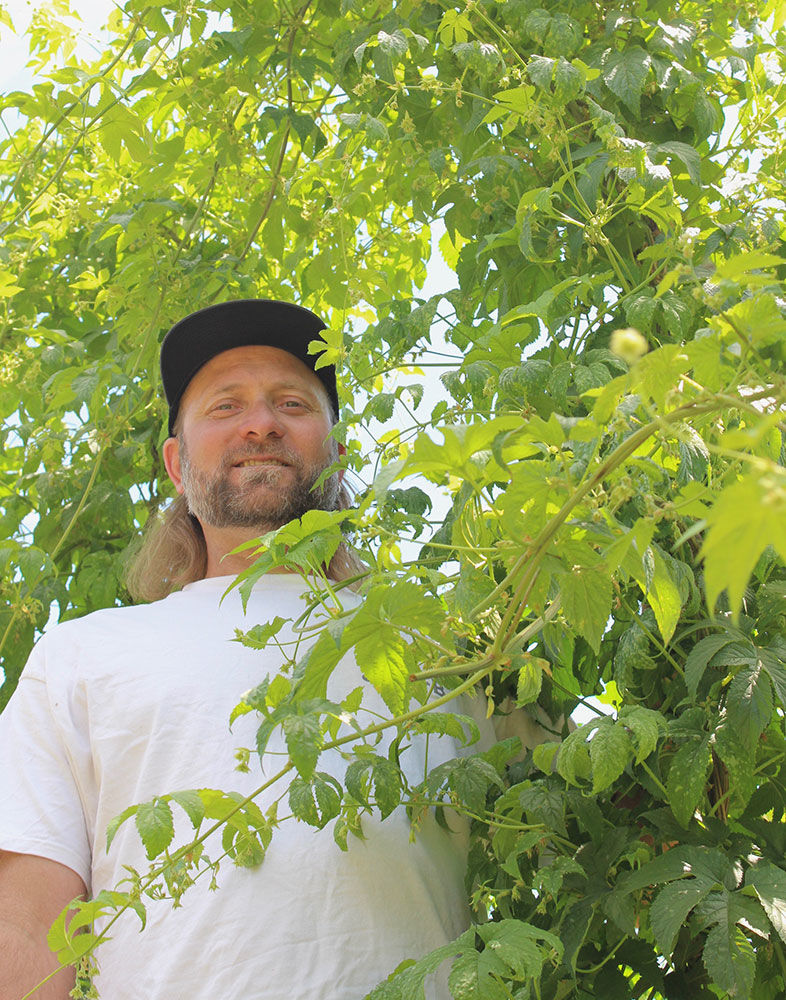
Inside San Diego’s Largest Hop Farm
Eric March manages the bison and hops businesses for Star B. | Photo: Bruce Glassman
The hop-growing inspiration first came to Eric’s family around 2004, when they decided to slow the bison business and began looking for another opportunity that would utilize the resources of their land. The passing of a pro-agriculture winery ordinance at that time meant farmers all over Ramona were planting vineyards, so the folks at the ranch considered building a winery, but according to Eric, they all soon realized that beer was their real passion. During this same period, the craft beer industry was also starting to explode in San Diego, so the family decided to find a way to become part of that burgeoning scene. At first, the plan was to open a brewery. They got to know some of our local brewers—they went to Alpine and fell in love with what Pat McIlhenney was doing—and were inspired to open their own place. Star B applied with the county to open a brewery on the property but—due to arcane zoning ordinances—they were turned down. Still wanting to be part of the beer community, and spurred on by the hop shortage that was affecting the industry at the time, Eric and his family decided to become hop farmers. (An amended ordinance to promote agriculture was passed in 2016, which allowed for more extensive secondary uses on agricultural land, including—among other things—honey production, cheese making, distilling, and brewing.)
According to Eric, some people are incredulous when he says he’s a San Diego hop farmer. “I tell people and they don’t believe me,” he says. “I told a table full of German hop growers that I grow hops in San Diego and they basically laughed me out of the room.” Eric attributes the widespread skepticism to the fact that, when most people think of San Diego, they think of the coast and they don’t realize that the county is home to a vast collection of growing conditions and microclimates. “Most people don’t know that, in San Diego County, you could potentially surf, snowboard, ride your motorcycle in the desert, and hike in an Alpine meadow all in the same day,” says Eric. “San Diego also has the largest number of small family farms in the country—and most of them are organic.”
The hop farm at Star B grows mostly Cascade and Nugget, but boasts a total of 25 varieties. The other common “C” hops (Centennial, Crystal, Columbus, Chinook) are among Eric’s most popular, but he’s also recently added Comet, Cashmere, and Columbia, among others.
I asked Eric what he thought were the basic differences between Pacific Northwest hops and the same varieties grown in San Diego. “I get a lot of the same characteristics you get from the Pacific Northwest, but I get more herbal spiciness—almost like the spicy basils or cinnamon and clove—with a little bit of stonefruit that’s almost like a sweet bread or bakery kind of smell, ” Eric says. “The Pacific Northwest versions would be more citrus and pine.”
San Diego hops seem comparable to Pacific Northwest in terms of alpha acid levels (the bittering component of hops) as well. Eric says he had a couple of his varieties tested and the results were very similar to what brewers are used to from Washington and Oregon. “My Cascade, however, is through the roof,” he says. “I’ve had 10% alpha acid, and the normal range is 4% to 8% with 6% being average. I tell people in the hop industry I have 10% and they say, ‘That’s a Super Cascade!’ On the other hand, Nugget is supposed to come in around 12% to 14% and mine comes in a little low at around 11%.”
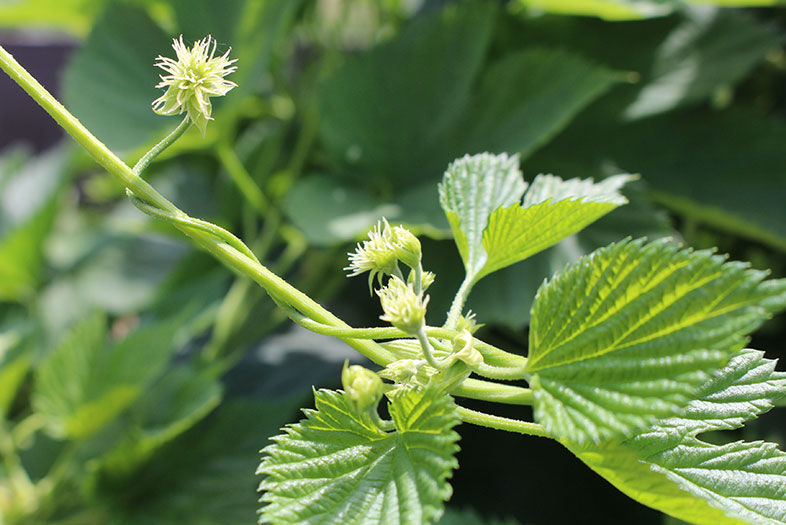
Inside San Diego’s Largest Hop Farm
By the middle of August, these tiny buds will be beautiful cones of Cascade hops. | Photo: Bruce Glassman
Everybody likes Star B’s Cascade and Chinook, but Eric is also pushing new varieties, like Neo-Mexicanus, which he’s planted in three varieties. According to Eric, that particular hop has a more spicy aroma and flavor with more pronounced citrus as well. “Neo 1 is supposed to have a lot of lemon-lime,” he explains, “but I get a lot of white and pink peppercorn and green chiles—like Hatch chiles.” Eric is also really excited to see how his Cashmere plants evolve: “It’s a daughter of Cascade and I get a lot of passionfruit off of it. It’s really very cool.”
Eric has longstanding relationships with many of San Diego’s best brewers, including Tom Nickel (Nickel Beer), Scot Blair (South Park Brewing Co.), and Jeff Wiederkehr (Burning Beard). All together, Eric says he works with 18 different beverage companies; they’re mostly breweries, but he also supplies two cideries, and a meadery. Though most of his customers are in San Diego, some of Star B’s hops find their way to breweries in Anaheim and Temecula.
The big draw for Star B is local brewers’ desire to do “wet hopping,” which utilizes fresh, just-picked hop cones and imparts the maximum freshness of aroma and flavor. Most brewers strive to use these hops within 24 hours of their being picked, but many get them into the kettle within just a few hours. The cones can also be left to dry out, at which point they’re used for “dry hopping”—a technique that also imparts intense hop aromas and flavors. On average, brewers will need to use 3 to 4 times the amount of fresh “wet” hops compared to cones that have been dried (fresh hops have higher moisture content). For a standard hop-forward IPA, brewers will typically need about 10-12 pounds of fresh hops to make a barrel (two kegs) of beer.
While the San Diego hops industry has grown during the past five to ten years, it still remains relatively small. Eric says there are between eight and 10 hop growers in the county that are actively producing right now, and he estimates that total area planted is somewhere between 13-15 acres all together. From its three acres, Star B currently produces about 3,000 pounds of hops per harvest, but Eric is hopeful that his 2018 yield will be higher.
Even though the hop-producing community remains small, Eric is optimistic that the industry will grow in San Diego. “At the end of the day, if we can pull off some hop farming, it’s kind of a no-brainer to have hop farms in San Diego,” Eric says. “We call ourselves the ‘Hoppiest Place on Earth’ and we’re famous for West Coast IPAs and pale ales, so let’s grow those San Diego-flavored hops!”
Follow Bruce on Instagram: @sdbrewdude
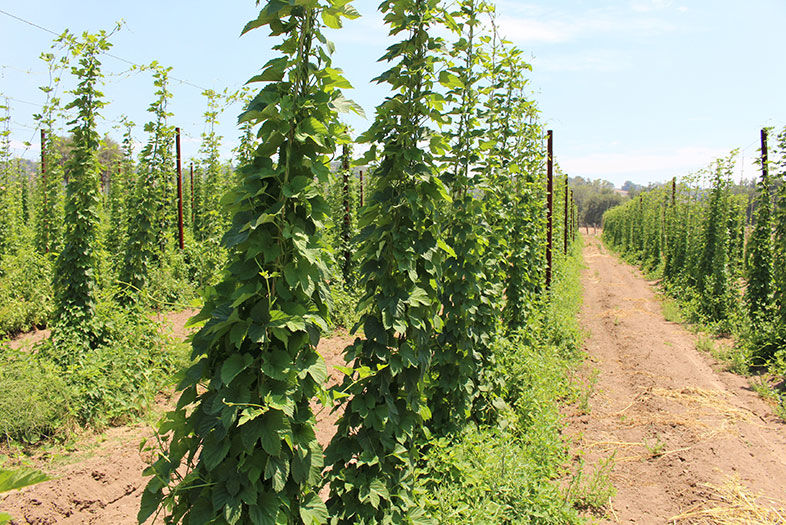
Inside San Diego’s Largest Hop Farm
Star B Ranch in Ramona is San Diego’s largest hop producer. | Photo: Bruce Glassman


